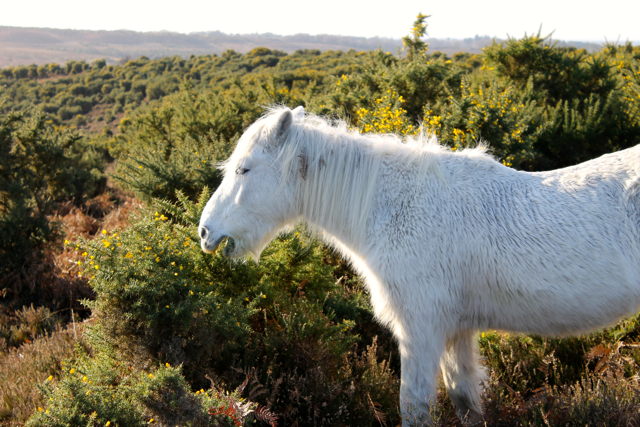
The New Forest pony is known as the ‘architect’ of the Forest, because their grazing habits shape the landscape.
Living and working close to the New Forest means that the sight of the fabulous New Forest pony is never far away. These are native ponies whose history can be traced beyond the beginnings of the Forest itself. The standard for the breed is up to 14.2hh (148cm) and only solid colours, such as bay, brown, grey or chestnut, are acceptable. Coloured ponies, such as piebald (black and white patches), skewbald (black and/or brown and white patches) or appaloosa (spotted) types cannot be registered as purebred New Forest. Blue eyes are also not permitted in New Forest ponies and white markings are only acceptable on the head and legs. They should have sloping shoulders, strong quarters, plenty of flat bone, good depth of body, straight limbs and good hard round feet. It is said that a New Forest pony can carry a stone in weight for every hand in height. They were bred for working and had to be able to turn their hooves to any task, which is what makes them such a versatile breed today.
New Forest ponies make excellent mounts for adults and children. Their intelligence and superb temperaments make them excel in all equine activities, including dressage, carriage driving, show jumping, polo and showing. However, the ponies that you see grazing on the New Forest are mainly semi-feral and only after a period of socialisation and training, by knowledgable people, are they safe to approach. The ponies have been called the ‘architects’ of the Forest, for it is through their browsing and grazing that the landscape takes its present form. Without their contribution to the ecology of the Forest (and also that of the cattle and deer) the Forest would soon be overgrown with brambles, gorse and other coarse herbage.



You must be logged in to post a comment.